We may receive a teeny weeny commission for items purchased through links.
IMPORTANT UPDATE: The guest contributor is shown here working with fiberglass. He does not wear gloves for the tutorial. Fiberglass is a hazardous material. It causes skin and eye irritation and may damage lungs. Do NOT use fiberglass for this project. Please use ONLY resin per the directions below.
Safety First…
Before you get rolling with this project, you’ll need to keep a few things in mind.
Follow these precautions when working with liquid resin:
1. Wear a face mask that includes a filter.
2. Wear safety goggles.
3. Wear protective gloves. (Yep, the mad scientist kind.)
4. Wear long sleeves, long pants and a shirt collar with a high neck.
5. Do not directly inhale the resin. If resin gets on the skin, wipe with a dry cloth and call your doctor immediately. Not everyone has a skin reaction to resin. The most common reaction in sensitive individuals is slight to moderate irritation.
With all that said, on to the tutorial from scream specialist David Lay!
The Project: Let’s Get Crafty
For this project I have decided to make a single body part -specifically, a hand.
I also chose materials that you can buy locally (think hardware or craft stores). If you’re practicing safer at home measures, I’ve provided links so you can purchase the materials online.
You will need:
- Plaster of Paris
- Cheesecloth
- Liquid plastic casting resin
- Plastic cups and spoons
- Disposable chip brushes
The Mold
I wanted my body part to look like a mummy’s hand, so I needed to make a mold that would give it mottled skin.
If you’re not confident yet of your freehand sculpting skills, you may prefer making a clay model first.

I mixed up some plaster of Paris per the box’s instructions and dipped strips of cheesecloth into the mixture.
TIP: I coated my arm with Vaseline petroleum jelly so the plaster wouldn’t stick. (WAY less of a hassle cleaning up afterward!
Then I layered the plaster-coated cheesecloth onto my arm.

I pushed the cheesecloth into the spaces between my fingers, but made sure I had no convolutions (where the mold folds under itself).
I let the cheesecloth hang over the end of my fingers to make sure I covered the tips of my fingers. And yes, before you ask, it felt a bit…eew. (Halloween props are worth it, though!)
I used a canned vegetable can to rest my hand on so it would have the right bend to it. You can put your hand into any shape you’ll want your finished prop to have.

After hardening, I carefully pulled the cast off. This may take some doing; ask a friend to help if you’re having trouble.

Casting the Hand
For the next step, I coated the inside of the mold with Vaseline to keep the resin from sticking. One of the drawbacks of plaster is that it is porous, so be very generous with the Vaseline.
I wanted the skin to have a mottled look to it, so I made up a small amount (about two ounces – see below on how to do this) of resin and coated the inside of the mold without tapping the bubbles out.
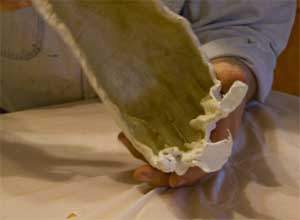

I then mixed up about 8 ounces of the resin with the hardener as instructed on the can of resin, and stirred it. Then I poured the resin into the mold…
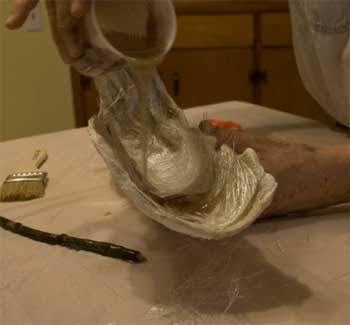
…and spread it out with a chip brush.
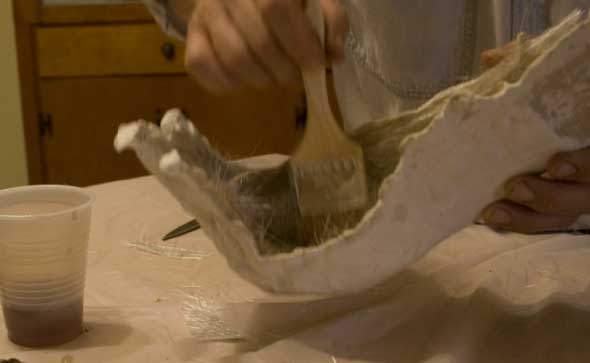
I let this harden for about 2 hours, and then began pulling the mold from the “hand”:

Be aware that you will likely break the mold in this process. You’ll need to create a new one for each extra prop you want to create.

Painting Your Body Part
I trimmed with a jigsaw (you can use strong industrial scissors) to cut away the excess, and then painted the hand using acrylic paints (yellow ochre is shown here):

After drying, the molting looked like a mummy’s (or zombie’s) hand:

I added some red and black paint to make a “wound”:

…and did the same for the fingers:
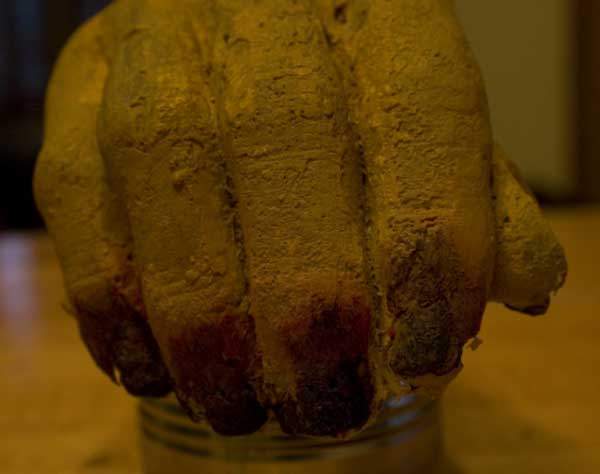
…and, viola, a mummy’s hand!
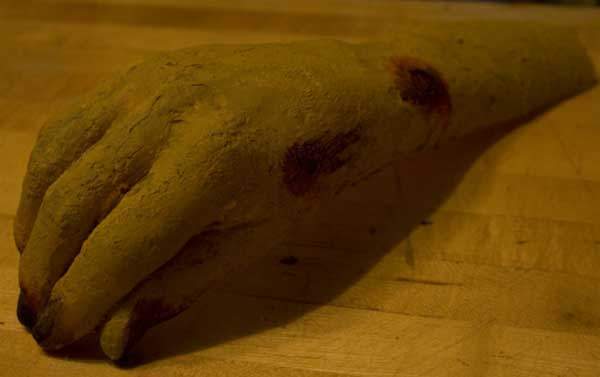
Happy haunting!

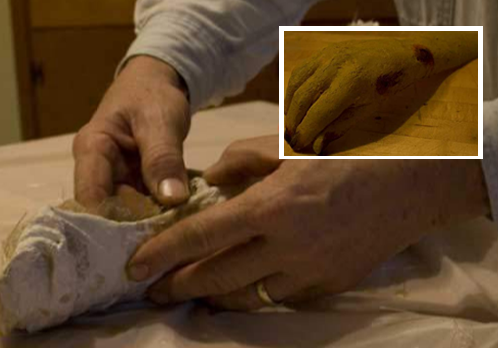
I am going to attempt my first pay-to-enter haunted house this year.I need some thrifty ideas to really scare patrons without me fainting over the cost.Help!!!!!!
Wow! I think that this is really cool and fun to do. I would definitely try it out! 🙂